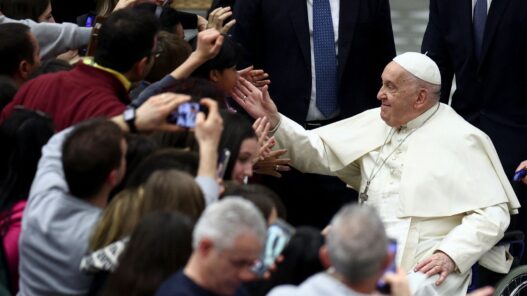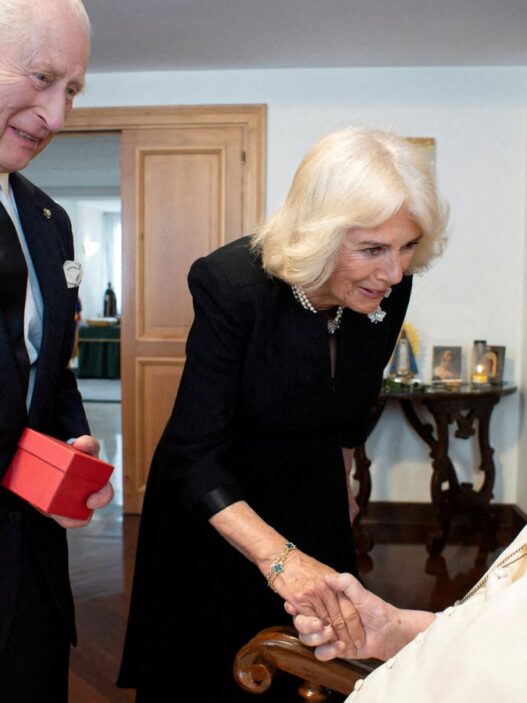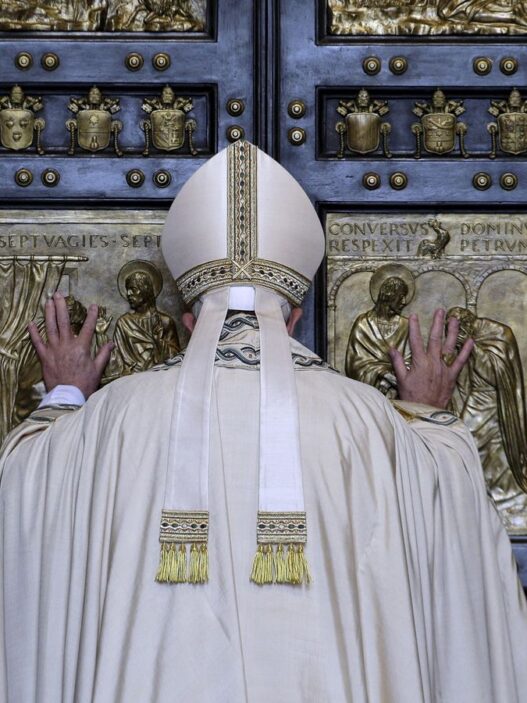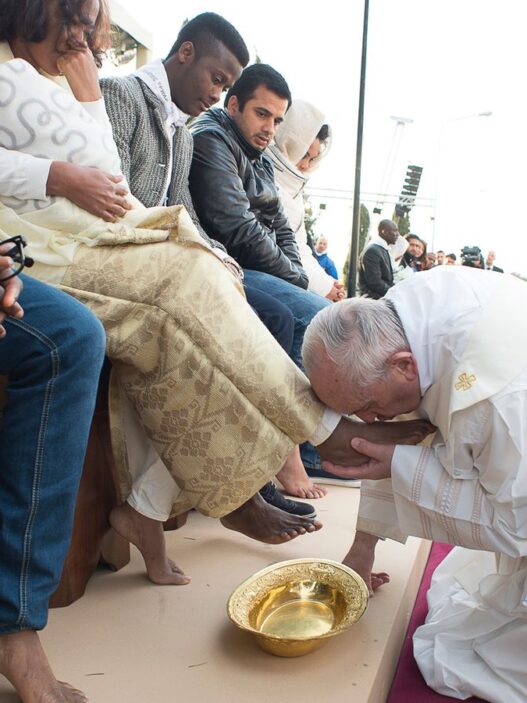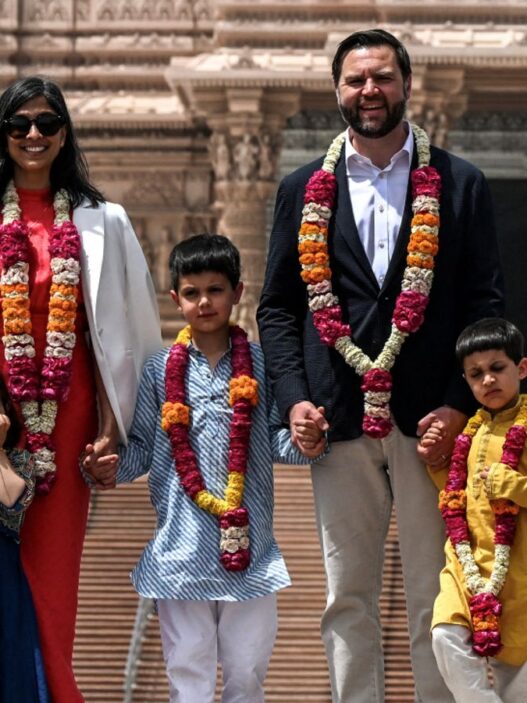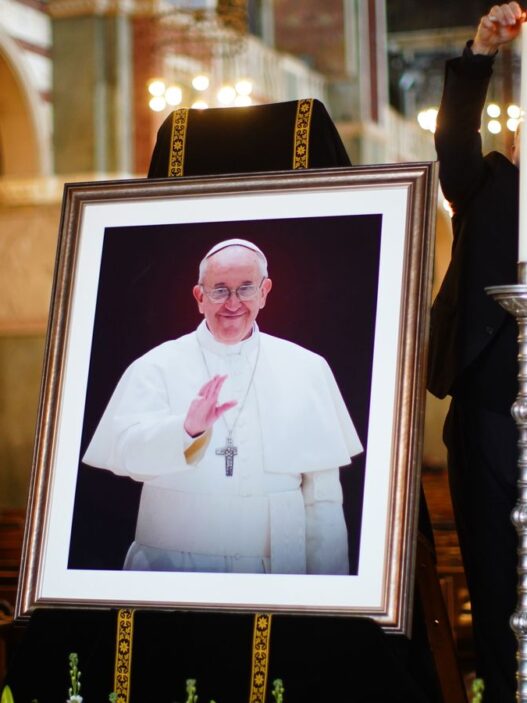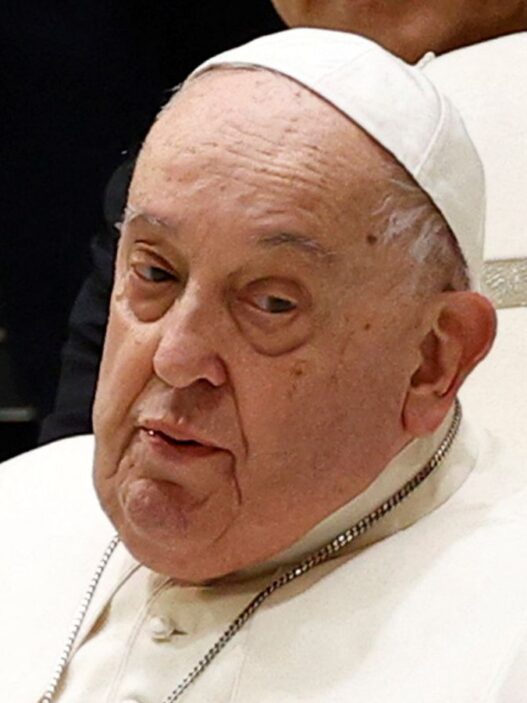Pope Francis leaves a legacy unlike that of many of his predecessors.
The Argentinian pontiff, who ushered in a swathe of reforms over his 12-year papacy, symbolised to many an increasingly modern, progressive, and inclusive Church.
As life expectancy worldwide has risen, so has the average age of popes at the end of their papacy.
At 88, Pope Francis ended his term of office as the second-oldest among all popes from the past 500 years.
He was surpassed only by Pope Leo XIII, who died in 1903 at age 93.
Francis’s immediate predecessor, Pope Benedict XVI, stepped down as pope at age 85 – the first pope to resign in almost 600 years. He died in 2022 aged 95.
Pope Francis was also among the oldest to begin his papacy when he was chosen by the College of Cardinals, the senior leadership tier of the Church, in 2013, when he was in his seventies.
Despite his age, Francis enjoyed unusually high levels of popularity among young Catholics.
Francis diverged from Benedict and his other predecessors on many contentious issues within the Church. He more openly embraced LGBTQ individuals (although stopped short of full acceptance), decried climate change, and called publicly for a ceasefire in Gaza.
He apologised for the church’s role in colonisation in Latin America while visiting Bolivia in 2013 and again, in 2022, for its involvement in running boarding schools aimed at assimilating Indigenous people in Canada.
Although these moves alienated some factions of the church, they proved overwhelmingly popular with others. In a 2020 survey of British Catholics, 50% said Pope Francis represented change “for the better” compared to just 7% who said he signalled a change “for the worse”.
Francis was rated even more highly among Catholics under 30.
“Pope Francis has had very favourable media coverage, worldwide, right from day one,” said Stephen Bullivant, a professor of sociology of religion at St Mary’s University Twickenham, who worked on the survey.
“People have the impression that he’s funny, kind, progressive, green – he has a good ‘brand’ you might say. That certainly wasn’t the case with Benedict – hence the perceived ‘change for the better’.”
In many Latin American countries, his approval ratings fell between the start of his papacy in 2013 and 2024, although he still remained broadly popular among the region’s Catholics.
Pope Francis distinguished himself from his predecessors by rejecting wealth and embracing those living in poverty, explained James Kelly, an associate professor in the history of Catholicism at Durham University.
“They’re very much part of his Jesuit background with the preferential option for the poor, and he’s made that clear repeatedly,” said Prof Kelly.
An increasingly global church
Francis’s most impactful change, perhaps, was in recognising global diversity within the church.
Born in Buenos Aires, Argentina’s capital, Francis made history as the first pope from the Americas.
During his tenure, Francis oversaw a rise in the number of Catholics worldwide, driven primarily by growth in Africa and the Americas.
Africa is the fastest-growing region for Catholics – and not just because of its faster overall population growth compared to other regions of the world. The proportion of the region’s population identifying as Catholic also grew during Francis’s papacy.
And, despite only getting their first pope with Francis in 2013, the Americas are the most Catholic of all the world’s regions. The region has the greatest number of followers, as well as the highest proportion of their population that practices the faith.
In 2022, 666.2 million Catholics lived in the Americas – 64% of the continent’s total population.
Europe, on the other hand, lost about 1.5 million Catholics between 2013 and 2022, going from 39.9% to 39.5% of the total population.
Prof Bullivant said that the slight decline in the number of European Catholics can be attributed to a low Catholic birthrate as well as poor rates of transmission, or the likelihood that children raised Catholic will continue practising as adults.
“As many European countries get progressively less religious on the whole, it becomes more and more an uphill task for committed Catholic parents to ‘succeed’ in raising committed Catholic adults,” Prof Bullivant said.
“In Britain, roughly half of people who say they were brought up as Catholics now identify as having ‘no religion’. Europe’s Catholic population figures would be even lower if not for a significant amount of Catholic immigration from places like Nigeria, the Philippines, and India.”
Changing representation of cardinals
In recognition of a following increasingly centred away from Europe, Pope Francis diversified the College of Cardinals.
The Church was traditionally dominated by Europeans, and particularly Italians. More than three-quarters of all popes have hailed from areas within the borders of modern-day Italy. Until Polish-born John Paul II became pontiff in 1978, the Church had not seen a non-Italian take up the office in over 450 years.
Despite Europe remaining overrepresented compared to its global share of the Catholic population, a majority of the cardinals appointed by Francis came from other regions of the world.
57% of the cardinals appointed by Benedict XVI were European whereas under Francis, it was just 40%.
Francis’s elevation of cardinals from around the world recognised Catholicism as a global religion, Prof Kelly said – “a fact that’s been true since the early modern period – so, since the 16th century, certainly into the 17th century”.
“We have a tendency, because we’re in Europe, to talk about the state of the church or the history of the church from very much a Eurocentric view,” Prof Kelly said.
That’s very different to how someone in Japan, India or the Middle East might view it, he added.
His possible successors
Pope Francis’s diversification of the College of Cardinals could affect who is selected as his successor during the upcoming papal election, known as a conclave.
“How they will elect is up in the air. Nobody knows, because nobody expected them to vote for Francis,” said Prof Kelly.
Prof Bullivant agreed that predicting Francis’s successor is extremely difficult. But, he added, with Francis’s reforms to the College of Cardinals, “you’d certainly have to assume that it raises the odds of another pope from outside of Europe”.
While some Italian cardinals, including Pietro Parolin, Matteo Zuppi, and Pierbattista Pizzaballa, have been floated as potential successors, other possible candidates represent parts of the world that have yet to claim a pope.
Cardinals Fridolin Ambongo Besungu of the Democratic Republic of the Congo and Luis Antonio Tagle of the Philippines, for instance, are considered contenders.
Other cardinals seen as possibilities include Peter Erdo of Hungary, Raymond Burke of the United States, Wim Eijk of the Netherlands, and Mario Grech of Malta.
As the Catholic church prohibits women from being ordained as priests – a doctrine upheld by Francis during his papacy -not only have all past popes been men, but they will likely continue to be so, at least for the foreseeable future.
What’s in a name?
Once a new successor is elected, their first task will be to choose a papal name.
Pope Francis, who was born Jorge Mario Bergoglio, selected his papal name in honour of Saint Francis of Assisi, the Italian friar who rejected his wealthy upbringing by taking a vow of poverty. Many saw the selection of this name as indicating what his papacy would represent and the values he wished to embody.
He was the first pope to take on the name of Francis. The most common papal name among all popes has been John, a name tied to many famous Christian figures such as John the Evangelist, John the Apostle, and John the Baptist.
The other most common papal names include Benedict, Gregory, Clement, and Leo.
Regardless of which papal name is chosen, it will almost certainly carry significance. For many followers around the world, it could be the first hint of whether the next pope will follow in Francis’s footsteps or break with their predecessor to forge a new path for the Church.
The Data and Forensics team is a multi-skilled unit dedicated to providing transparent journalism from Sky News. We gather, analyse and visualise data to tell data-driven stories. We combine traditional reporting skills with advanced analysis of satellite images, social media and other open source information. Through multimedia storytelling we aim to better explain the world while also showing how our journalism is done.

